John Hurrell – 2 July, 2025
As a rectangular slice from an open-veined shiny hard carpet of embedded pebbles, pitted flecks and specks, and straggling striations—shown on a wall—its solid geological presentation at first glance seems a jumbled disarray; but the shape-oriented rhythms are in fact vaguely regular. The work's hues are dominated by pale bluey greys and barely detectable soft earthy mauves.
Creating pristine pencil drawings or acrylic paintings of dried concrete, showcasing construction aggregate with its embedded mix of smooth river stones, is an unusual but intriguingly obsessive way of generating images that would usually be seen as monotonous or a total non-event. Apart from zeroing in on what is beneath our feet in the gallery floor, with Ruth Cleland there is a hint within her title of a strange joking pun going on about reality and solidity, that dwells on apparent ‘hard’ surfaces and the linked motion of assumed tiny speeding subatomic particles.
In terms of overt subject matter, there seems to be a faint tip of the hat to Sylvia Plimack Mangold’s seventies (very detailed) paintings of stained wooden floors, but on a more conceptually stable level of compositional format where she is also preoccupied with regular stacked-up grids, not only as unseen and helpful structures, but also as visible planning mechanisms that have an industrial mechanised feel. These occasional tightly executed linear insertions are possible references to Agnes Martin and Sol Lewitt, and in this country, occasionally Geoff Thornley—yet the opposite of matrixes is also apparent: the loosey-goosy liquid stringlike dribbles of Pat Hanly or Jackson Pollock.
As a rectangular slice from an open-veined shiny hard carpet of embedded pebbles, pitted flecks and specks, and straggling striations—shown on a wall—its solid geological presentation at first glance seems a jumbled disarray; but the shape-oriented rhythms are in fact vaguely regular. The work’s hues are dominated by pale bluey greys and barely detectable soft earthy mauves. The result is that the dominant monochrome in these super-realisitic works is restricted but nuanced, while the shiny reflective surface of the depicted gallery floor is openly acknowledged, not ignored.
Cleland’s other works are austere intricate grids that specialise in repeatedly stacked linear modules of boxed-in enclosed space where vertical and horizontal lines dominate—only to be interrupted by diagonal swathes that occasionally crash through the picture-plane to ‘rudely’ take over the space. There seems to be a humorous gleeful violence here where expected picture-plane conventions are sometimes turned on their head or shoved to one side. For some the images may initially seem dry, ‘over-photographic’ and too pristine, but if you are inclined to ponder about where you are literally treading (other than concerns about dogshit!), they are also subtle, at times slyly droll, and highly refreshing.
John Hurrell
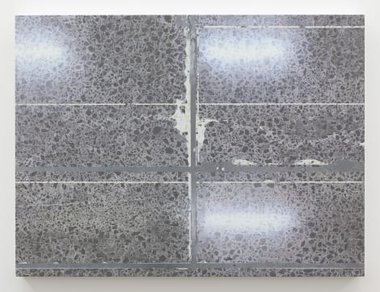






 Advertising in this column
Advertising in this column Two Rooms presents a program of residencies and projects
Two Rooms presents a program of residencies and projects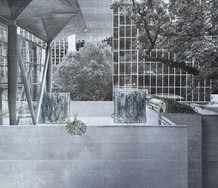
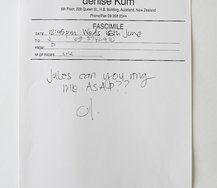
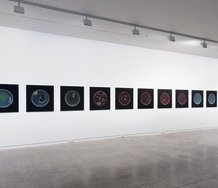
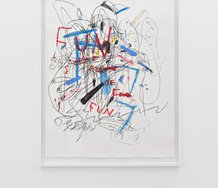
This Discussion has 0 comments.
Comment
Participate
Register to Participate.
Sign in
Sign in to an existing account.